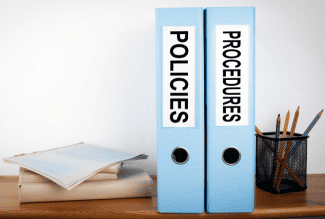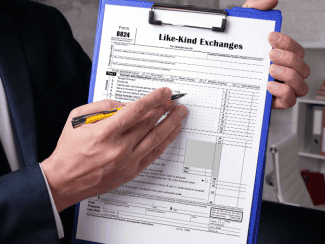Can A Landlord Change Pet Policy: The Ultimate Guide To Updated Rules
A landlord can change the pet policy governing their rental property at any time.

However, even if a landlord initially allows pets, there may come a time when they decide to change their pet policy.
This can be a source of concern and uncertainty for tenants who have pets or are considering getting one.
Understanding the rights and limitations of both landlords and tenants is crucial in such situations.
We will explore the question of whether a landlord can change the pet policy and discuss the important factors to consider in such circumstances.
So, if you are a pet owner or planning to bring a furry friend into your life, keep reading to know your rights and responsibilities as a tenant when it comes to the pet policy changes made by your landlord.
- Factors That Impact A Landlord’s Pet Policy
- How To Approve And Accept Pets
- Legal Considerations For Changing Pet Policy
- Steps To Change A Pet Policy
- Communicating And Enforcing The Updated Pet Policy
- FAQs About Can A Landlord Change Pet Policy
Factors That Impact A Landlord’s Pet Policy
When it comes to renting a property, one of the factors that many tenants have to consider is the pet policy set by the landlord.
The pet policy determines whether tenants are allowed to have pets, what types of pets are allowed, and any additional restrictions or requirements.
However, a landlord’s pet policy is not set in stone and can be subject to change. Several factors can impact a landlord’s decision to change their pet policy.
Lease Agreements And Pet Provisions
One of the primary factors that can impact a landlord’s pet policy is the lease agreement between the landlord and tenant.
A lease agreement is a legally binding contract that outlines the terms and conditions of the rental agreement.
Within the lease agreement, there may be specific pet provisions that dictate whether tenants are allowed to have pets and the conditions they must adhere to.
These provisions can include restrictions on the size, breed, or number of pets allowed, as well as any additional fees, deposits, or pet rent.
Local Laws And Regulations
Local laws and regulations also play a significant role in shaping a landlord’s pet policy.
Different municipalities may have specific rules and ordinances regarding pets in rental properties.
For example, some cities may have breed-specific legislation that bans certain dog breeds, while others may have limitations on the number of pets allowed.
Landlords must keep up with these local laws and regulations to ensure their pet policy is compliant.
Paying Too Much For Insurance?
Get a FREE quote to insure your rental properties for less.
Insurance Policies And Liability
An important consideration for landlords when setting their pet policy is insurance policies and liability.
Landlords often have insurance policies that protect their property and cover any damages.
Insurance companies can have their own pet-related policies and requirements.
Some insurance providers may have restrictions on certain dog breeds or may exclude coverage for any damages caused by pets altogether.
Property Type And Condition
The type and condition of the property also influence a landlord’s pet policy.
For example, landlords of apartments or condominiums may have stricter policies compared to landlords of single-family homes.
The size of the property and its outdoor space can also affect the pet policy. Landlords with larger properties or access to nearby parks may be more lenient in allowing pets.
- Lease Agreements and Pet Provisions
- Local Laws and Regulations
- Insurance Policies and Liability
- Property Type and Condition
| Factors | Impact |
|---|---|
| Lease Agreements and Pet Provisions | Specify pet restrictions and conditions |
| Local Laws and Regulations | Determine legal requirements for pet policies |
| Insurance Policies and Liability | Affected by coverage and exclusions related to pets |
| Property Type and Condition |
Influence the flexibility and restrictions of the pet policy |
How To Approve And Accept Pets
Are you a landlord looking to modify your pet policy and allow tenants to have furry friends in their rental units?
From screening potential tenants to setting clear guidelines and collecting the necessary fees, we’ll cover all the essential steps to ensure a positive experience for both you and your tenants.
Screening And Application Process
The first step in approving and accepting pets is to implement a thorough screening and application process.
This process allows you to assess the suitability of potential tenants and their pets for your rental property.
By including specific pet-related questions in your application form, such as the type of pet, breed, and size, you can gather essential information to help you evaluate the potential risks and benefits of allowing a pet on your property.
During the screening process, request references from previous landlords or property managers to get insights into how well the tenants have maintained their pets.
This information can help you gauge the responsibility of the pet owners and their ability to adhere to any pet guidelines you may establish.
Tenant Responsibilities And Pet Guidelines
Establishing clear pet guidelines and outlining tenant responsibilities is crucial to maintaining a harmonious living environment for all residents, both human and animal.
These guidelines should cover essential aspects such as leash laws, clean-up responsibilities, noise control, and any restrictions on aggressive breeds.
It is also vital to specify the number of pets allowed per unit, as well as any weight or size restrictions.
By setting these guidelines, you can ensure that your property remains safe and comfortable for all tenants while minimizing potential conflicts between pets.
Security Deposits And Pet Fees
Collecting a security deposit and pet fees can provide an additional layer of protection for your rental property.
Security deposits help cover any potential damage caused by pets, such as scratches on floors or walls, while pet fees can contribute to any necessary cleaning or repairs once a tenant and their pet have moved out.
By following these steps and implementing a well-thought-out process, approving and accepting pets can benefit both you as a landlord and your tenants.
Guidelines, screening, and responsible pet ownership can create a positive living environment and attract responsible pet owners to your rental property.
Now you can proceed confidently and make informed decisions about modifying your pet policy.
Legal Considerations For Changing Pet Policy
As a landlord, the decision to change your pet policy is not one to be taken lightly.
Not only should you consider the impact it may have on your current tenants, but you also need to ensure that any changes you make are legally compliant.
This section will outline the essential legal considerations you should keep in mind before implementing any changes to your pet policy.
Providing Notice To Current Tenants
When making changes to your pet policy, it is crucial to provide notice to your current tenants.
This gives them an opportunity to adjust their living arrangements accordingly or seek alternative housing if they are unable to comply with the new policy.
It is recommended to give at least 30 days written notice to allow time for proper planning.
Valid Reasons For Changing Pet Policy
While you have the right to change your pet policy, it is important to have valid reasons for doing so.
These reasons should be clear and justifiable in order to avoid any potential legal disputes. Some valid reasons for changing the pet policy may include:
- Instances of damage caused by pets, result in additional maintenance and repair costs
- Complaints from other tenants about noise, allergies, or safety concerns related to pets.
- A change in insurance coverage or requirements from your insurance provider.
- Compliance with local or state laws pertaining to pet policies in rental properties.
Exceptions And Reasonable Accommodations For Service And Emotional Support Animals
It is essential to be aware of exceptions and reasonable accommodations for service and emotional support animals.
Under the Fair Housing Act, landlords are required to make reasonable accommodations for tenants with disabilities who require assistance animals.
These accommodations may include exceptions to the pet policy or the allowance of emotional support animals, even in properties that have a no-pet policy.
In conclusion, changing your pet policy as a landlord requires careful consideration of legal obligations and the impact on your tenants.
Providing proper notice, having valid reasons for the change, and understanding exceptions for service and emotional support animals are all crucial components in making the process legally compliant and fair for all parties involved.
Steps To Change A Pet Policy
Changing a pet policy as a landlord can be a delicate process that requires careful consideration and effective communication.
Whether you want to implement new rules, modify existing provisions, or restrict certain types of pets, it’s important to follow the proper steps to ensure a smooth transition for both you and your tenants.
By reviewing current lease agreements, modifying lease terms and pet provisions, and effectively communicating policy changes to tenants, you can successfully change your pet policy.
Reviewing Current Lease Agreements
Before making any changes to your pet policy, the first step is to review the current lease agreements with your tenants.
Take a thorough look at the existing terms and conditions, specifically focusing on the pet provisions.
This will help you understand the current rules and restrictions applicable to pets on your property.
Modifying Lease Terms And Pet Provisions
Once you have reviewed the current lease agreements, you can move on to the next step: modifying lease terms and pet provisions.
Here, you will need to consider what changes you want to make to the pet policy.
This could include anything from adding new restrictions, modifying weight limits, or adjusting pet deposit requirements.
Note: It’s crucial to check the laws and regulations in your jurisdiction before implementing any changes to ensure compliance with applicable rules.
Communicating Policy Changes To Tenants
After you have made the necessary modifications to the lease terms and pet provisions, the final step is to effectively communicate the policy changes to your tenants.
This is a critical step to ensure that everyone is aware of the new pet policy and understands the updated rules and regulations.
- Notify your tenants in writing about the changes to the pet policy. This can be done through an official notice or an addendum to the existing lease agreement.
- Clearly explain the changes that have been made and how they will affect tenants with pets.
- Provide a deadline by which tenants must comply with the new policy.
By following these steps, you can effectively change your pet policy as a landlord while maintaining transparency and ensuring that your tenants are informed about the updated rules governing pets on your property.
Communicating And Enforcing The Updated Pet Policy
Discover how landlords can effectively communicate and enforce an updated pet policy.
Learn about the process of changing a pet policy and ensure a smooth transition for both tenants and their furry friends.
Clear And Transparent Communication
When a landlord decides to update their pet policy, clear and transparent communication is crucial.
It is important for landlords to inform their tenants about any changes in the pet policy promptly and clearly.
This can be done through various channels such as email, written notice, or a face-to-face conversation.
Landlords should clearly outline the new rules and regulations regarding pets, including any restrictions, requirements, or additional fees that may apply.
Regular Inspections And Pet Policy Compliance
In order to ensure the updated pet policy is being followed, landlords may want to consider conducting regular inspections of the rental property.
These inspections serve several purposes – to ensure tenants are complying with the pet policy, to identify any potential damages caused by pets, and to address any health or safety concerns that may arise.
| Benefits of Regular Inspections: | Actions to Take: |
|---|---|
| Ensure pet policy compliance | Notify tenants about the inspection in advance |
| Identify damages caused by pets | Check for pet licenses or documentation |
| Address health and safety concerns | Verify proper disposal of pet waste |
Handling Violations And Disputes
Despite clear communication and regular inspections, there may still be instances where pet policy violations occur. In such cases, it is important for landlords to handle the situation promptly and fairly.
When violations are identified, landlords should address the issue with the tenant directly and remind them of the pet policy guidelines they agreed to when signing the lease agreement.
In cases where a tenant repeatedly violates the pet policy and discussions fail to rectify the issue, landlords may need to take further action.
This could involve imposing fines, issuing warnings, or ultimately, terminating the lease agreement as a last resort.
By clearly outlining the consequences for non-compliance with the pet policy, landlords can establish a framework for dealing with violations and ensure the overall well-being of the rental community.
FAQs About Can A Landlord Change Pet Policy
What If Landlord Changes Their Mind About Pets?
If the landlord changes their mind about pets, you will need to have a conversation and negotiate with them.
Can Landlords Deny Pets California?
Yes, landlords in California can deny pets.
What Is The Animal Terms And Conditions Addendum?
The animal terms and conditions addendum sets forth the specific terms and conditions that apply to animals in a contract or agreement.
Can A Landlord Change Pet Policy If It Was Previously Allowed?
Yes, a landlord can change the pet policy if it was previously allowed. However, they must provide notice and follow any legal requirements.
Conclusion
Ultimately, a landlord’s ability to change their pet policy depends on the terms of the lease agreement and local laws.
It is crucial for both landlords and tenants to communicate openly and address any concerns regarding pet policies.
By maintaining a respectful and fair approach, landlords can create a positive environment for both pet owners and non-pet owners alike.
Being aware of the local regulations and considering the needs of all parties involved can help ensure a harmonious living situation for everyone.
Source: Rental Awareness















 Accessibility
Accessibility